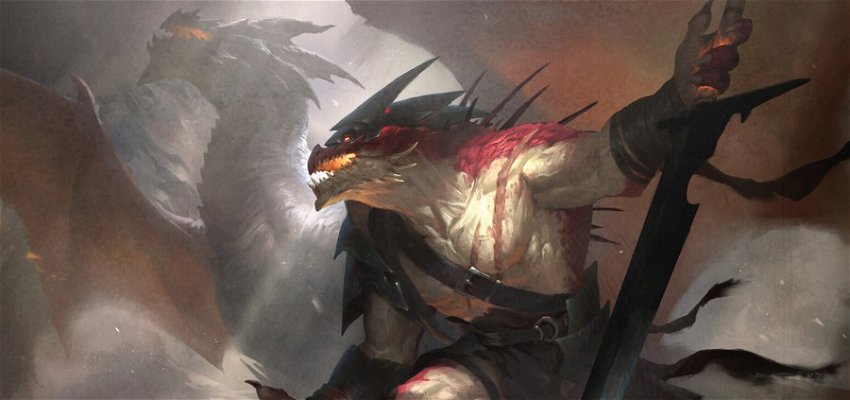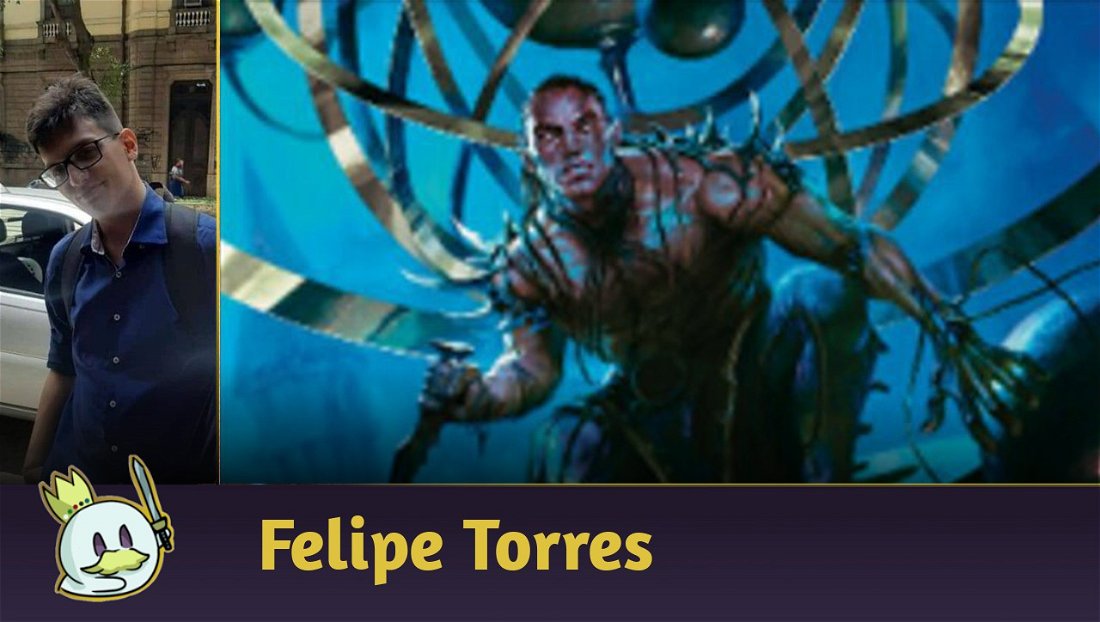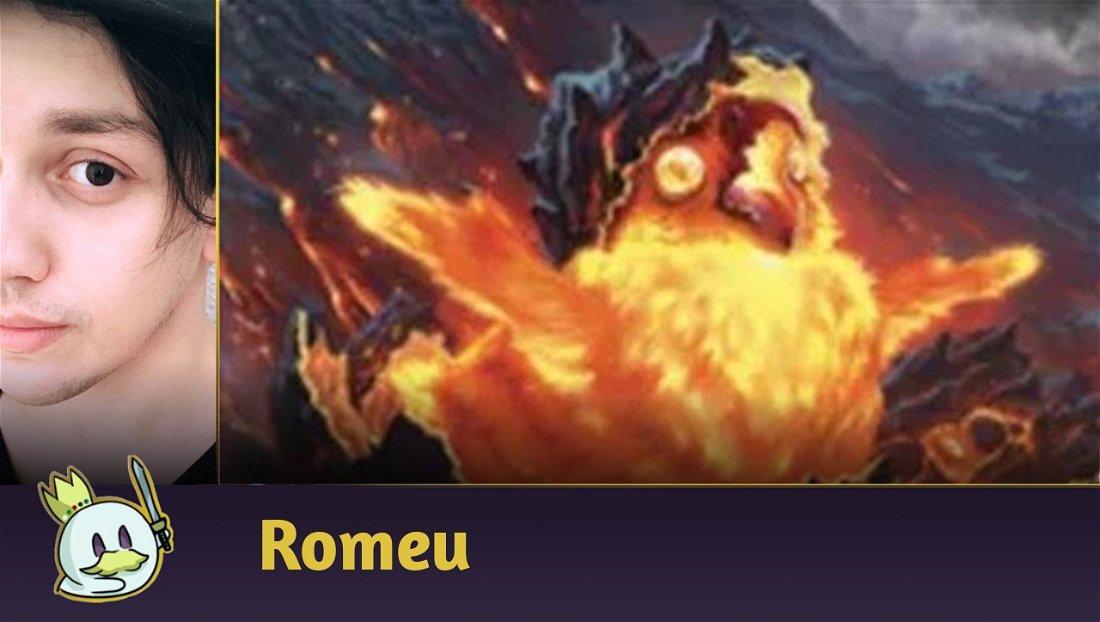After a few months between the last set, Streets of New Capenna, we are left without much news for Modern, but with September, finally approaching and bringing Dominaria United, a new set in the most classic of worlds designed for the game, but bringing some fun twists to the plot built over decades.
Since we're salivating to get our hands on some of the new cards in the set and shake up the format, I've rounded up some of the best alternatives the set will offer, bringing Modernities to the conflict between Dominaria and Phyrexia.
Ad
Honorable Mention — Stenn, Paranoid Partisan

We started with a card that can be all or nothing in Modern, for a deck that hasn't been the same since Modern Horizons 2, which only earns it an honorable mention.
However, in an ideal world, Stenn would allow a traditional UWx a good mana advantage to its user, allowing its instants to be cheaper than normal, adding more value and versatility to its plays.
However, times are different today, and the main strands of UWx Control use fewer cards that can be named by Stenn, whether in the form of spells with colored costs, such as Counterspell and Archmage's Charm, or creatures with evoke, as is the case with Solitude, making it just stay here and not go too far down the list.
Honorable Mention — Liliana of the Veil

Also appearing on the set, we have the reprint of Liliana of the Veil, a card that in its heyday was known as one of the most powerful Planeswalkers ever released. Despite not being included in the formal Top 5 list, which is dedicated only to new cards, this card clearly deserves to be mentioned, for all the history it has had in the format.
Fifth Place — Quirion Beastcaller

The main use for Quirion Beastcaller would be to serve as an extra stabilizer for Hardened Scales decks, almost like a second The Ozolith. Despite being an extra resource, it is interesting to note that in the more aggressive origins of the deck, turn two is already planned to bring creatures like Walking Ballista already optimized through the key strategy enchantment.
Thus, this druid becomes a creature that seeks more stability in the long term, losing less value with removals and the like, to be an extra guarantee so that your game isn't easily damaged. That's because we haven't even mentioned the benefits it can bring to a Stompy deck.
Even though it is in the lowest position of this ranking, it is still a card that can be very useful if studied.
Fourth Place — Twinferno

Here we have a spell that fits well in Modern prowess decks, but I've seen many people saying it's not good for Burn, Twinferno.
This is a modal instant spell, which serves both as one of the best copy spells ever created, as it doesn't use two specific color mana, but one red and one generic, and it can also be a Temur Battle Rage in the right hands.
Not only capable of copying Burn's signature damage spells, increasing the aggression of a lightning bolt or the value of a Light Up the Stage, this card also lets you catch any creature that's gotten beefier with triggers and becomes a nose-kicking machine, triggering another time and guaranteeing double strike to Monastery Swiftspear at the same time.
We're talking about a card that can be decisive in a game, and that makes it a very solid choice for our list of best cards in the set, having enough to synergize with Modern.
Ad
Third Place — Sheoldred, the Apocalypse

Here we have one of my favorite cards in the set, not due to its power, but because of the structure with which it was planned. Typically, Phyrexian Praetors are designed with the idea of costing a hefty amount of mana, but they bring totally asymmetric effects, which will sink opponents' game and benefit your plans while they are in effect.
Sheoldred, the Apocalypse follows a similar but more modest path. While capable of a game-unbalanced effect, she is far less rogue than other praetors, which reflects his slightly modest mana cost.
Although many consider four mana a high cost for Modern, expected for the closing the game against more aggressive decks, it becomes an interesting piece for decks a Midrange strategies seeking to extend the matchup and mitigate the damage dealt by aggro decks or punish control archetypes.
Its only real flaw is its vulnerability to removals, but fitting it into any situation where your opponent doesn't have one immediately will be a real headache.
Second Place — Founding the Third Path

Here we can see a Saga with a tasty quality, which we haven't seen in a while. Founding the Third Path develops slowly, through some very interesting steps, which start with casting a card without paying its mana cost. Or, if you decide to use the “Read Ahead” mechanic, skipping Saga chapters, you can either be a one-time mill for any of the players involved, or become a Snapcaster Mage before being sent to the graveyard.
Despite its lack of Flash, the enchantment accumulates utility in other ways, allowing its graveyard to be filled and even being able to cast a Free Spell if it enters with the first chapter, which with a Manamorphose can only bring more value to the card.
It becomes even more interesting in decks like Izzet Blitz and/or Arclight Phoenix, which when combined with Scry, can bring a selection of milled cards and fatten your Dragon's Rage Channeler, including the fact that the card is an enchantment that naturally goes to the graveyard, which adds even more to Darcy's Delirium mechanic.
Founding the Third Path can only get better with time, and it's a wonderful Magic card for Modern.
First Place — Temporary Lockdown

With things as they are in Modern, we can be sure of one thing: Faster, lower-cost cards are absolutely necessary, with even Control-style decks needing gimmicks like Free Spells to keep up with the format's wild pace.
Amid recent obscenities like Ragavan, Nimble Pilferer and Colossus Hammer, and older atrocities like Teferi, Time Raveler, Death's Shadow and Wrenn and Six, low-cost cards have always dominated Modern, and the idea of slowing low-curve archetypes has always been well-received, through cards like Thalia, Guardian of Thraben. Thanks to Temporary Lockdown, we have one more tool to contain the explosion of aggressive decks.
Ad
To improve, once your opponent reestablishes the board with low-cost cards, it is possible to blink the enchantment thanks to Yorion, Sky Nomad to clean the battlefield again.
The possibilities of Temporary Lockdown are many, as a card with simple rules and with a single objective, players will soon discover the impact of this card, which is the best of the new set for Modern.
Editorial

One card that many may be questioning its entry on the list is Cut Down, a one-mana black Removal that targets creatures whose total sum of power and toughness is 5 or less. There has been a lot of discussion in card back is better or worse than another high-end removal of the format, Fatal Push because it can hit cards regardless of their mana cost.
An excellent discussion, by the way, since most Modern creatures, in theory, would be good targets for it. Unfortunately, this on paper doesn't turn out to be a good idea. We can say this because of creatures like Monastery Swiftspear and Tarmogoyf, with a tendency to grow, and others like Death's Shadow, which are naturally large but low cost, or even some naturally powerful threats that dodges it like most of the Evoke cycle.
Although interesting, better creatures need to appear and that only Cut Down can handle, so there is a niche for it. And the best part about Magic is that it can happen anytime.
That's all for today, until next time!








— Comments0
Be the first to comment